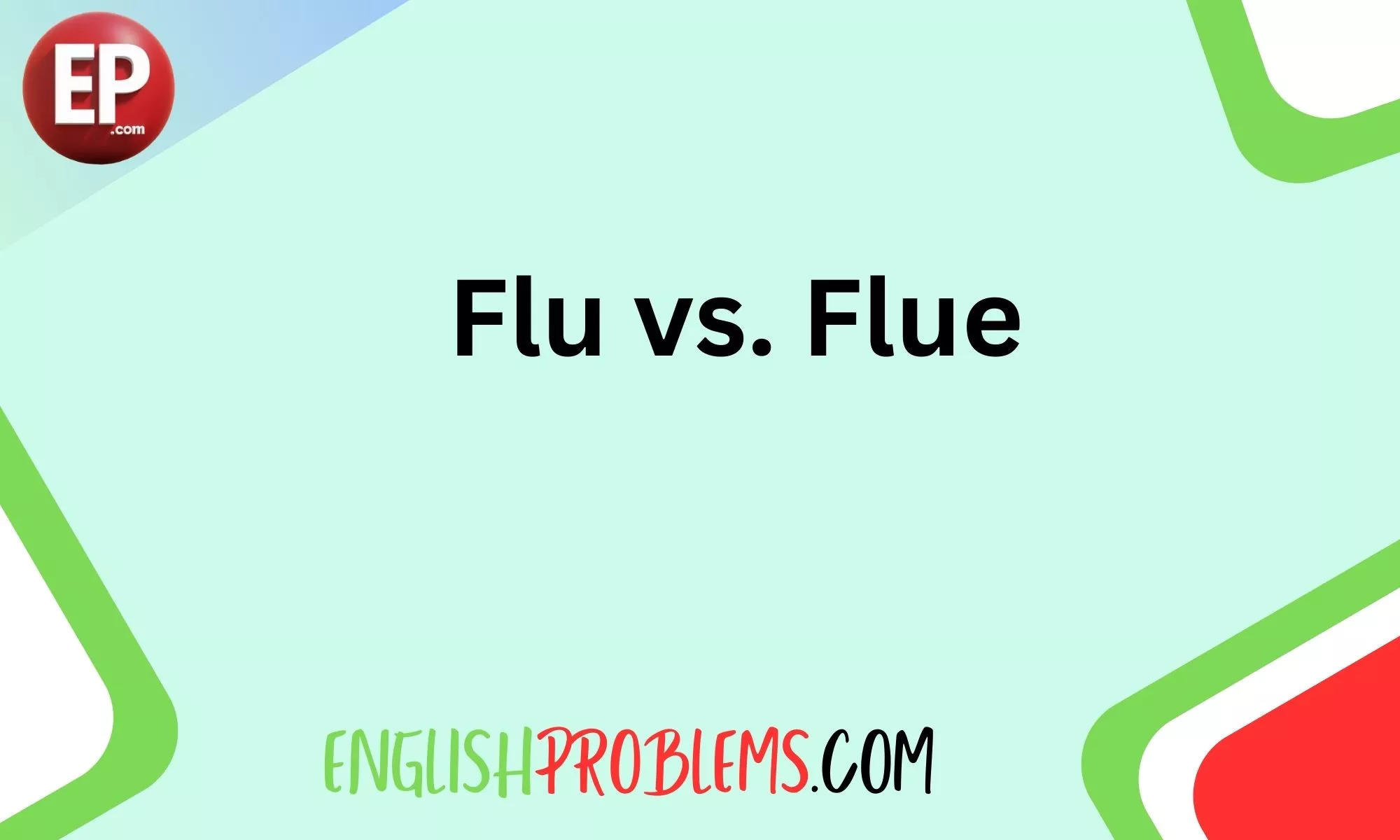Many people confuse the flu, a common viral infection, with a flue, a crucial component of chimney systems in homes. This confusion arises mainly due to their similar pronunciation but vastly different meanings.
Understanding the difference between the flu and the flue is essential for both health and safety.
This comprehensive guide will explore the symptoms, causes, and treatments of the flu, as well as the role, types, and maintenance of flues in domestic settings. By the end of this article, you’ll have a clear understanding of both terms and their significance.
Understanding the Flu (Influenza)
What is the Flu?
The flu, short for influenza, is a contagious respiratory illness caused by influenza viruses. It affects the nose, throat, and sometimes the lungs, leading to mild to severe illness, and in some cases, can be fatal. Influenza viruses are classified into four types: A, B, C, and D, with types A and B being the most common causes of seasonal epidemics.
Common Symptoms of the Flu
The flu often comes on suddenly and can include a variety of symptoms. Common symptoms of the flu include:
- Fever: A high temperature, usually above 100.4°F (38°C)
- Chills: Feeling cold and shivering
- Muscle Aches: Body and muscle pain, often severe
- Cough: A dry or productive cough
- Congestion: Nasal congestion and runny nose
- Fatigue: Extreme tiredness and weakness
- Sore Throat: Pain or a scratchy feeling in the throat
- Headache: Pain in the head or face
- Gastrointestinal Symptoms: Nausea, vomiting, and diarrhea (more common in children)
Understanding these symptoms can help in early detection and treatment, potentially preventing complications.
Causes and How It Spreads
Influenza is caused by influenza viruses, which infect the nose, throat, and lungs. The flu spreads mainly through droplets made when people with flu cough, sneeze, or talk. These droplets can land in the mouths or noses of people who are nearby or possibly be inhaled into the lungs. Less often, a person might get the flu by touching a surface or object that has the flu virus on it and then touching their own mouth, nose, or possibly their eyes.
Transmission Methods:
- Airborne Droplets: Spread through sneezing, coughing, or talking.
- Direct Contact: Shaking hands with an infected person.
- Surface Contact: Touching surfaces contaminated with the virus.
Effective Flu Treatments and Prevention Tips
Medical Treatments
- Antivirals: Medications like oseltamivir (Tamiflu) and zanamivir (Relenza) can reduce the severity and duration of the flu if taken within 48 hours of symptom onset.
- Over-the-Counter Medications: Pain relievers like ibuprofen or acetaminophen can help reduce fever and aches.
Home Remedies
- Rest: Ensure plenty of rest to help the body fight off the infection.
- Hydration: Drink fluids such as water, herbal teas, and broths to stay hydrated.
- Warm Liquids: Soups and warm beverages can soothe a sore throat and help with congestion.
Prevention
- Vaccination: The flu vaccine is the most effective way to prevent the flu. It’s recommended annually as flu viruses evolve.
- Hand Hygiene: Regularly washing hands with soap and water or using hand sanitizer.
- Avoid Close Contact: Stay away from people who are sick, and if you’re sick, limit your contact with others.
Understanding the Flue (Chimney Component)
What is a Flue?
A flue is a duct, pipe, or opening in a chimney for conveying exhaust gases from a fireplace, furnace, water heater, boiler, or generator to the outdoors. Its primary function is to ensure that dangerous gases and smoke are safely expelled from the home, preventing carbon monoxide buildup and other hazards.
Types of Flues in Homes
- Masonry Flues: Constructed from bricks or stone, often found in older homes. They are durable but require regular maintenance to prevent cracks and blockages.
- Metal Flues: Made from stainless steel or aluminum. They are commonly used in newer homes and are easier to install and maintain.
- Prefabricated Flues: Also known as factory-built or modular chimneys. These flues are pre-manufactured and can be installed in sections, offering flexibility and ease of installation.
Maintaining Your Flue for Safety
Regular maintenance of your flue is crucial to ensure it functions correctly and safely. Here are some tips for maintaining your flue:
- Regular Inspections: Have a professional inspect your flue at least once a year. They can check for blockages, cracks, or other damage.
- Cleaning: Chimneys should be cleaned regularly to remove soot and creosote buildup, which can cause chimney fires.
- Identify Blockages: Look for signs of blockages such as smoke backing up into the room, a lack of draft, or strange odors.
- Professional Maintenance: Hire certified professionals for repairs and cleaning to ensure the job is done correctly.
Flu vs. Flue: Key Differences Explained
Common Confusions and Mistakes with Flu and Flue
Despite their different meanings, the words “flu” and “flue” are often confused due to their similar pronunciation. Here are some common confusions and how to avoid them:
- Flu (Influenza): Refers to the viral infection.
- Example: “I caught the flu last winter and was bedridden for a week.”
- Flue (Chimney Component): Refers to the part of a chimney.
- Example: “We need to have the chimney flue inspected before lighting a fire.”
Using Flu and Flue Correctly in Sentences
To help remember the differences between “flu” and “flue,” consider the following tips and examples:
- Flu is related to health and illness.
- Correct: “After getting the flu shot, my chances of catching the flu decreased significantly.”
- Flue is related to chimneys and exhaust systems.
- Correct: “The chimney flue was blocked, causing smoke to fill the living room.”
Practical Tips
- Think of “flu” as short for “influenza.”
- Remember that “flue” contains the letters “u” and “e,” just like “duct,” which helps convey gases.
Conclusion
Understanding the differences between the flu and the flue is crucial for maintaining both health and safety. The flu, a common viral infection, can be managed with proper treatment and prevention measures. Meanwhile, a flue, an essential component of chimney systems, requires regular maintenance to ensure safety in the home. By keeping these distinctions clear and following the outlined tips, you can better manage your health and home safety.
Additional Resources
For more information on influenza and chimney maintenance, consider the following resources:
- Centers for Disease Control and Prevention (CDC): Influenza (Flu)
- World Health Organization (WHO): Influenza (Seasonal)
- Chimney Safety Institute of America (CSIA): Chimney and Venting Maintenance
- National Fire Protection Association (NFPA): Chimneys and Fireplaces
By leveraging these resources, you can stay informed and proactive about your health and home safety.

Lucy Wright combines her academic background with a flair for simplifying the intricate details of grammar. Her practical advice and clear explanations empower readers to improve their writing skills and grasp challenging concepts effortlessly.










